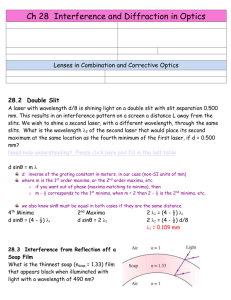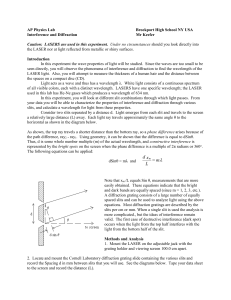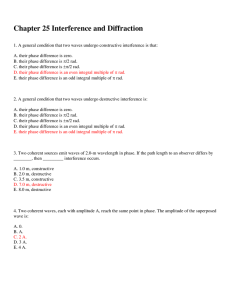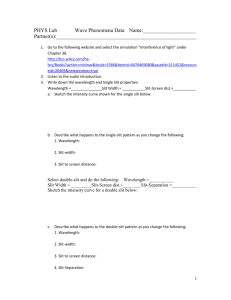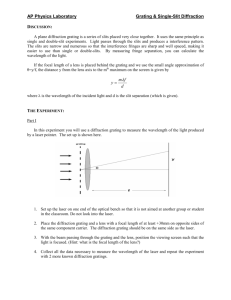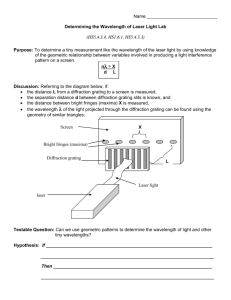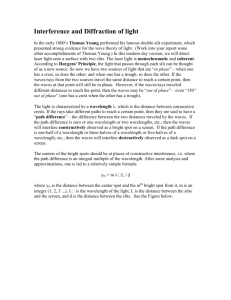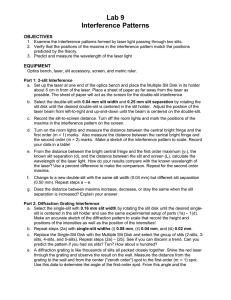Diffraction and Interference Lab
advertisement
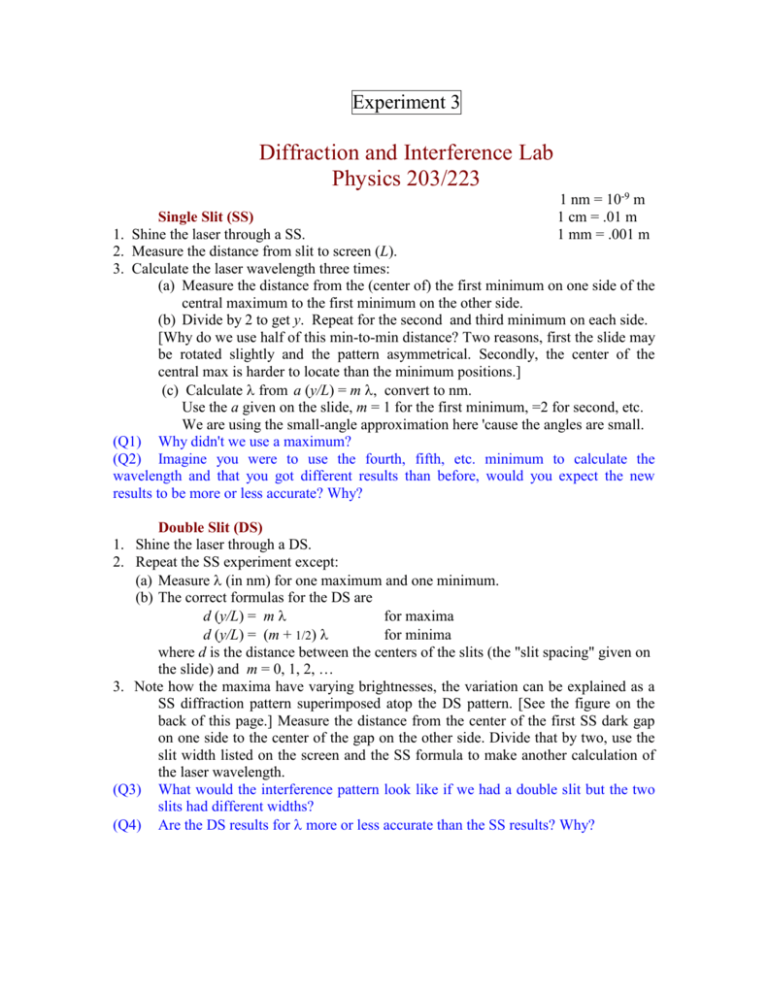
Experiment 3 Diffraction and Interference Lab Physics 203/223 1 nm = 10-9 m 1 cm = .01 m 1 mm = .001 m Single Slit (SS) 1. Shine the laser through a SS. 2. Measure the distance from slit to screen (L). 3. Calculate the laser wavelength three times: (a) Measure the distance from the (center of) the first minimum on one side of the central maximum to the first minimum on the other side. (b) Divide by 2 to get y. Repeat for the second and third minimum on each side. [Why do we use half of this min-to-min distance? Two reasons, first the slide may be rotated slightly and the pattern asymmetrical. Secondly, the center of the central max is harder to locate than the minimum positions.] (c) Calculate from a (y/L) = m , convert to nm. Use the a given on the slide, m = 1 for the first minimum, =2 for second, etc. We are using the small-angle approximation here 'cause the angles are small. (Q1) Why didn't we use a maximum? (Q2) Imagine you were to use the fourth, fifth, etc. minimum to calculate the wavelength and that you got different results than before, would you expect the new results to be more or less accurate? Why? Double Slit (DS) 1. Shine the laser through a DS. 2. Repeat the SS experiment except: (a) Measure (in nm) for one maximum and one minimum. (b) The correct formulas for the DS are d (y/L) = m for maxima d (y/L) = (m + 1/2) for minima where d is the distance between the centers of the slits (the "slit spacing" given on the slide) and m = 0, 1, 2, … 3. Note how the maxima have varying brightnesses, the variation can be explained as a SS diffraction pattern superimposed atop the DS pattern. [See the figure on the back of this page.] Measure the distance from the center of the first SS dark gap on one side to the center of the gap on the other side. Divide that by two, use the slit width listed on the screen and the SS formula to make another calculation of the laser wavelength. (Q3) What would the interference pattern look like if we had a double slit but the two slits had different widths? (Q4) Are the DS results for more or less accurate than the SS results? Why? Diffraction Grating 1. Shine the laser through the grating. 2. Determine the angle to the first and second maxima by measuring y and L and calculating = tan-1 (y/L), no small-angle approximation this time. lines 3. Use the line density on the grating (in mm ) to determine the d value in nm. (Just take the inverse and convert to nm). For both the first and second order maxima, use the grating formula to find the wavelength. Grating formula: d sin = m (Q5) Compare these results for to those you found earlier. Discuss. Superimposed Double-Slit and Single-Slit Patterns Picture of a typical double-slit interference pattern. The small red dots are the subsequent double-slit maxima. DS Central Maximum DS First Maximum But occasionally the DS maxima seem to fade out, like here. This is because the light rays coming through a single slit can interfere with themselves, this can cause no light to arrive from either slit even though the location may be one that would’ve had constructive interference between the two slits. Note the gaps in the double-slit pattern match the single-slit pattern with its “double-wide” central maximum. Picture taken from: http://www.physics.rutgers.edu/ugrad/labs/1lw.html

